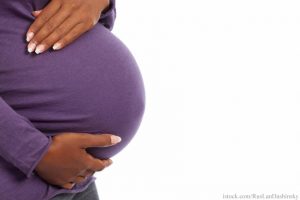Bidart Bros. Listeria caramel apple outbreak was a grim reminder about the special threat listeriosis poses to expecting mothers and their babies. As analyzed by the Centers for Disease Control and Prevention (CDC), eleven of the 35 illnesses attributed to the outbreak were pregnancy-related, with one case resulting in a fetal loss. One of the expecting mothers passed the Listeria bacteria to her fetus and the baby was born with an infection that required a month of treatment in the neo-natal intensive care unit of Lovelace Hospital in Albuquerque, New Mexico.
 Dr. Vanitha Janakiraman, writing in Obstetrics and Gynecology, provided in-depth information about the relationship between Listeria food poisoning and pregnancy. Infection from the pathogen is rare, but 20 more times common in pregnant women than in the general population. Pregnant women account for 27 percent of all Listeria case patients and the infectious disease can strike during any stage of pregnancy. And according to the CDC, Pregnant Hispanic women are about 24 times more likely than the general population to get Listeria infections.
Dr. Vanitha Janakiraman, writing in Obstetrics and Gynecology, provided in-depth information about the relationship between Listeria food poisoning and pregnancy. Infection from the pathogen is rare, but 20 more times common in pregnant women than in the general population. Pregnant women account for 27 percent of all Listeria case patients and the infectious disease can strike during any stage of pregnancy. And according to the CDC, Pregnant Hispanic women are about 24 times more likely than the general population to get Listeria infections.
The Journal piece by Dr. Janakiraman repeatedly urged physicians to be vigilant for signs of possible Listeria infections in expecting mothers because the bacteria usually causes only mild maternal illness characterized most often by a slight fever or light flu-like symptoms. It can also by asymptomatic. The pathogen initially travels quietly in people because Listeria is an intracellular organism that hides within host cells and doesn’t necessarily disrupt the digestive system when first ingested with tainted food. But as the Listeria rods multiply and pass into cells moving by, illness sets in — sometimes 70 days after initial exposure.
“Listeria’s intracellular transmission pattern likely explains its ability to cross the placental barrier,” Dr. Janakiraman wrote in a piece archived by the National Institutes of Health. The article also said that pregnant women who are immune-deficient, HIV-positive, diabetic or using steroids are at higher risk of listeriosis than the general pregnant population. However, most cases occur in otherwise healthy pregnant women. If not promptly and adequately treated with antibiotics, listeriosis in pregnancy may present serious hazards to the fetus and newborn through direct infection of the placenta
Fetal and neonatal infection is severe and frequently fatal. It can lead to pneumonia, sepsis or meningitis. Infected neonates often struggle with respiratory distress, fever, rash, jaundice, or lethargy.
Food safety for pregnant women is a study in itself and the CDC has published a 24-page pamphlet available online. In terms of dietary restrictions, the experts say that avoiding the following foods reduces a person’s risk: Improperly reheated hot dogs, luncheon meats, cold cuts, fermented or dry sausage, and other deli-style meat and poultry. Unpasteurized (raw) milk, queso fresco and other soft cheeses made with raw milk, smoked seafood and salads made in the store such as ham salad, chicken salad, or seafood salads are also risky. The last three multi-state outbreaks of Listeria in the U.S. have been linked to raw sprouts, ice cream and commercially produced, pre-packaged caramel apples.




